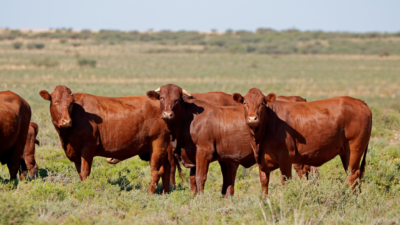‘Really delivered’: Hedge funds, equities boost Future Fund return
While the Future Fund’s CPI+4-5 per cent benchmark is running away it from these days, its 9.1 per cent financial year return marks a “really strong year” and one of the fund’s better periods for alpha production, according to CIO Ben Samild.
Samild largely attributed that return to equities, where the Future Fund has recently started looking for alpha again; its allocations to private credit; and “remarkably consistent” performance across its hedge fund portfolio.
“This year, all of those buckets gave pretty strong, positive returns, which is very unusual,” Samild said. “Those returns were driven in a really broadly dispersed way, so across quantitative managers and discretionary managers and stock picking equity managers and the rates and the FX complex, and across managers that trade across short horizons, medium horizons and long horizons. We wouldn’t expect that every year; it’s not built for that to happen.”
“We think the environment for skilled managers is a good one; they have more freedom and there’s much more dispersion in economies, within interest rate markets, across currencies, across equities and within equity markets. You can more easily build a well risk managed portfolio when you have more levers to pull, and we think that managers have had more levers to pull and you can see the outcome of that in returns.”
But while the Future Fund has almost always had “a really significant” allocation to hedge funds, that allocation hasn’t always been the brightest spot in its portfolio.
“To build a really significant allocation to hedge funds it’s our view that you need to be doing that over a long time, really understand the ecosystem extremely well, know what role you want it to play in your portfolio, and then build strong relationships and claim scarce capacity over time,” Samild said. “You can’t change the allocation dramatically, certainly increase it dramatically, on a whim and think you can maintain the high quality of returns.
“We’ve been building that portfolio for 15 years. The structure of it and the role of it within the total portfolio hasn’t changed; we can measure it, it has essentially no market exposure. Statistically it’s slightly negative equity beta and slightly negative rates beta and slightly negative credit beta. We think it’s very diversifying; it’s largely liquid, and it’s a very useful portfolio tool.”
The Future Fund’s return to active equity management has taken it into small caps and, more recently, the Japanese equity market, where it’s getting its exposure through Wellington Management and where it thinks there’s still inefficiencies that “put it in a good position to earn excess returns”.
“We think Japan is a really interesting market for active management for various reasons; we think there are inefficiencies which put us in a good position to earn excess returns over the benchmark, and we’ve continued to adapt the way we invest into that market… Because we think that there is strong potential for excess return to be had over passive we’re investigating all the ways we can do that.”
Meanwhile, the Future Fund expects inflation will be “more volatile and higher”. That doesn’t mean it thinks it will accelerate higher forever, but the fund “does feel obliged” to build a portfolio more resilient against it.
“We think about the world as it is, how it could be, and the probability that the world will shift into different places and the impact on assets in those different secular environments, and then we think about the kind of portfolio we would want to hold in those environments. When you increase the probability of a world with higher inflation and more macro volatility, you want to hold a different portfolio to make you more resilient to that environment.
“There’s lots of different, subtle things we do through the entire portfolio – that includes changes to our currency basket, explicit inflation protection, a different way of holding interest rates and a different level of interest rates, different assets; the domestic infrastructure exposure is a good example of that… There’s no one thing; it’s layered throughout all the decision making we do.”











